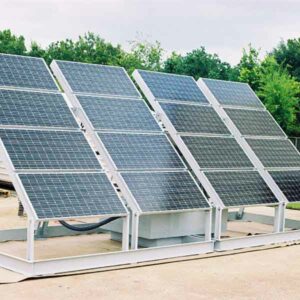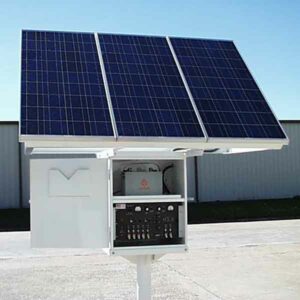Most people in our industry have a basic understanding of what solar power is. And, they know it can power cathodic protection systems. First, panels collect solar energy. Then, a storage mechanism stores the energy. Finally, a device sends that energy in some fashion to the equipment served by the solar power system. But the specific details of how the pieces of a solar power cathodic protection system work together can be somewhat confusing.
Power for Cathodic Protection Systems When The Grid Is Not Available
 JA Electronics has built high-quality transformer rectifiers for cathodic protection applications for over 40 years. As a result, we’ve earned a reputation for building a quality product. These transformer rectifiers convert AC power from the electrical grid to DC power for impressed current cathodic applications.
JA Electronics has built high-quality transformer rectifiers for cathodic protection applications for over 40 years. As a result, we’ve earned a reputation for building a quality product. These transformer rectifiers convert AC power from the electrical grid to DC power for impressed current cathodic applications.
Some applications require impressed current cathodic protection where electrical power from the grid is not available.
This is especially true for:
- Rural locations
- Cross-country pipelines that run through long expanses of lightly populated areas
Where commercial electrical power is not available, there are alternate solutions to generate the DC current necessary to drive an impressed current cathodic protection system.
One of the most economical and common sources of alternate cathodic protection system power is solar panels (photovoltaic cells). In addition to directly powering the system, the solar panels charge a battery system when there is no solar activity.
Solar Power Cathodic Protection System Components
 Solar Panels
Solar Panels
Photovoltaic cells come in many sizes, operating efficiencies, and power ratings. JA Electronics typically supplies panels rated for 140W or 150W.
The actual voltage output of a solar panel is higher than 12 volts. The voltage can vary with temperature, with the panel output decreasing as the temperature rises. These panels operate year-round and in a wide range of temperatures. Therefore, panel output can vary significantly as the temperature rises and falls throughout the day. The length of daylight operation varies seasonally and with the weather (cloud cover).
Batteries
Several types of batteries are available for solar systems. The designer determines the type and quantity of batteries needed based on the specific service, the system’s location, and the number of days of autonomy required.
Solar Controller (or Regulator)
The solar controller plays a critical role since it controls the voltage to the batteries and sends current to the load—in our case, the cathodic protection system.
Without a controller between the solar panels and the batteries, the batteries may overcharge. As a result, there is a risk of catastrophic failure.
Another feature common to most controllers is a low voltage override that disconnects the load when the battery’s voltage drops below a certain threshold. This helps prevent deep cycling, which can reduce battery life.
Finally, the controller prevents backflow of current into the solar panels at night. This reverse current can damage the system.
Cathodic Protection DC Current Controller
Most residential Solar Systems use an inverter to convert the DC electricity from the solar panels and/or DC batteries into AC current.
For solar power cathodic protection systems, the energy produced and stored is already DC energy. However, the ability to control the cathodic protection system is still required.
Enter the JA Electronics patented Omega II controller.
Omega II Cathodic Protection System Controller Features (LEARN MORE)
- 5-100% DC output adjustment capability using a dial potentiometer
- Available in 2-12vdc configurations
- Automatic short-circuit shutdown
- Provisions for remote monitoring and control
- Designed to operate in a constant voltage mode operation
These are the major components in a solar power cathodic protection system. As with all engineering efforts, understanding your specific application requirements and constraints is critical to properly sizing these components into an effective system.
RELATED ARTICLE: Learn from our partner MATCOR about design considerations for solar-powered cathodic protection systems.
